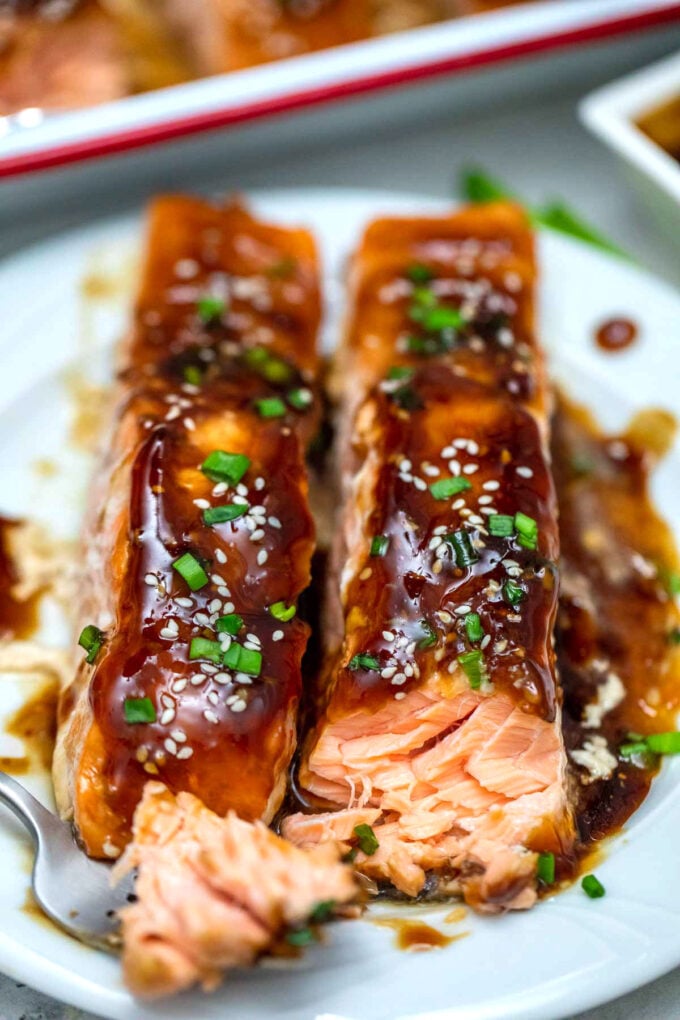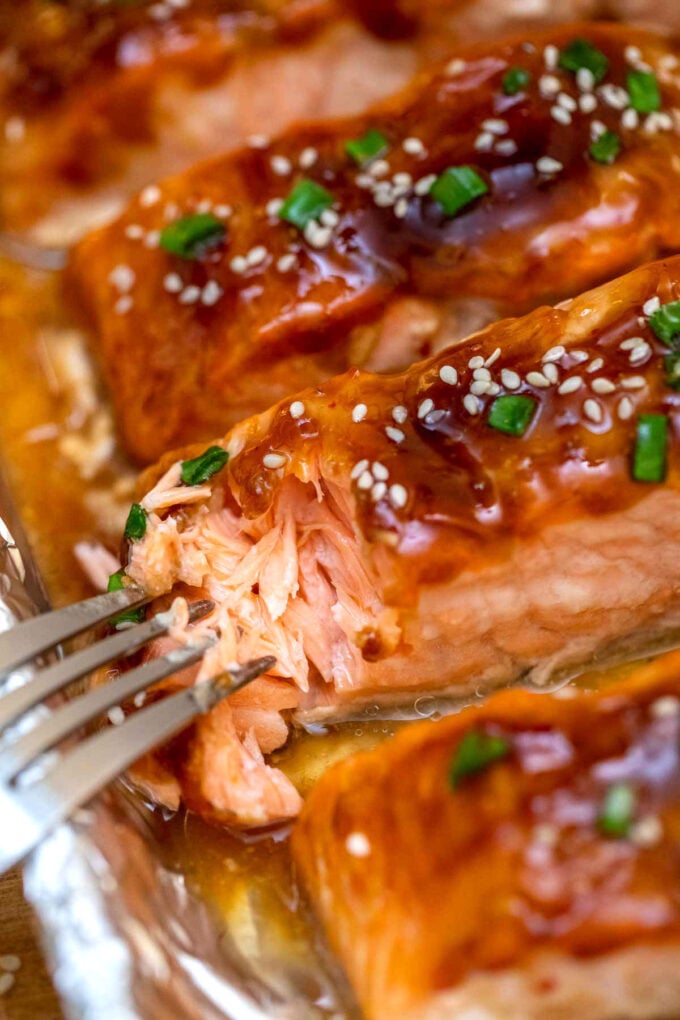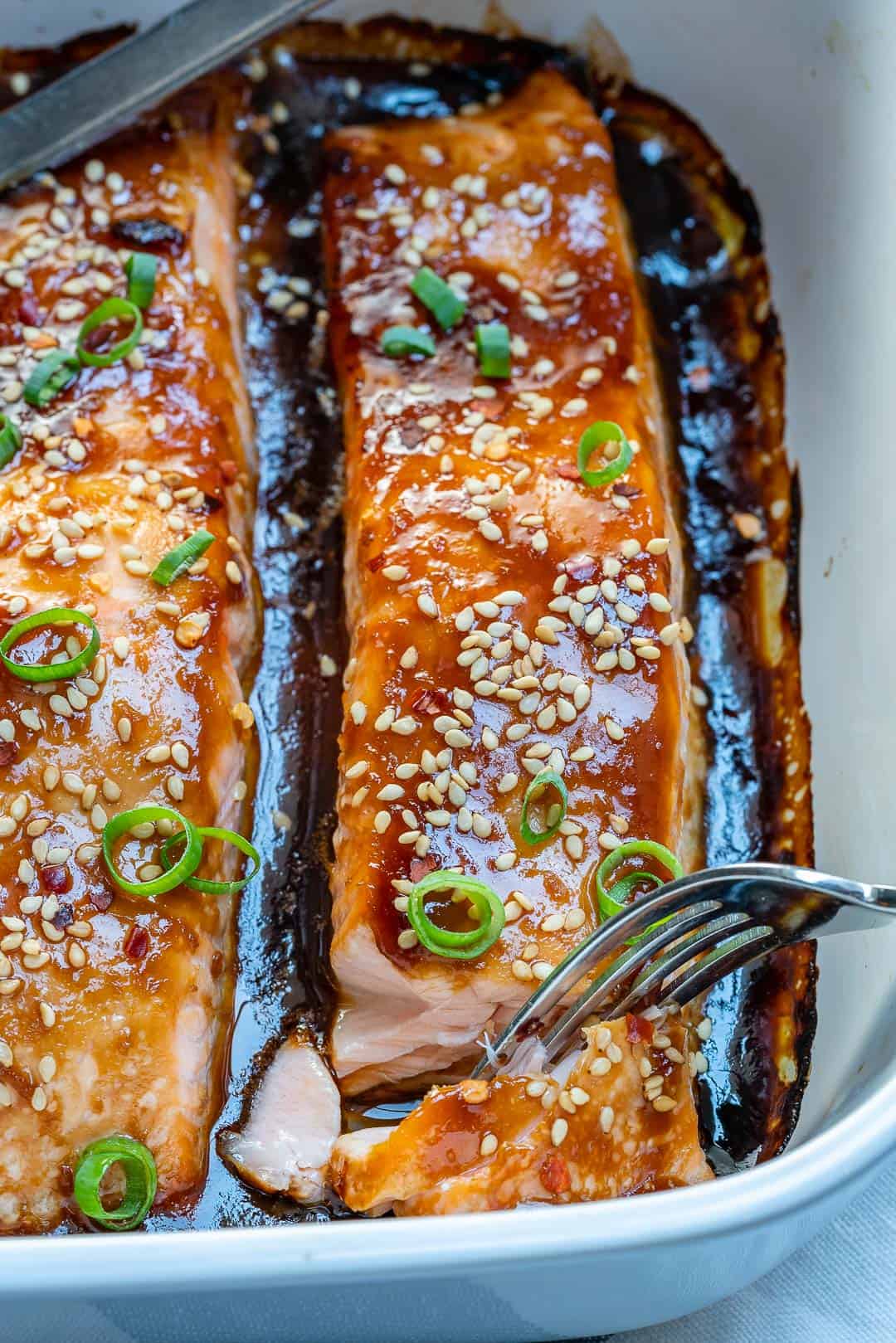Video tentang Teriyaki Salmon: A Culinary Journey Through Sweet and Savory Perfection
Teriyaki Salmon: A Culinary Journey Through Sweet and Savory Perfection

Teriyaki salmon. The very name conjures images of glistening, succulent salmon fillets, glazed with a rich, glossy sauce that balances sweet, savory, and umami notes. This dish, a cornerstone of Japanese cuisine, has transcended its origins to become a beloved staple worldwide. Its popularity stems not only from its incredible flavor but also its relative ease of preparation, making it a perfect weeknight meal or a show-stopping centerpiece for a special occasion. This article will delve into the fascinating world of teriyaki salmon, exploring its history, the nuances of its flavor profile, various preparation methods, and tips for achieving that perfect balance of sweet and savory.
A Glimpse into History:
While the precise origins of teriyaki remain shrouded in some mystery, its development is deeply intertwined with the history of Japanese cuisine. The term "teriyaki" itself is believed to be derived from two Japanese words: "teri," meaning "glossy" or "luster," and "yaki," meaning "grilled" or "broiled." This aptly describes the final product: a beautifully glazed, grilled fish with a captivating sheen.
Early forms of teriyaki likely involved marinating meat (often chicken or pork) in a simple sauce of soy sauce, sake, and mirin before grilling. The use of salmon, however, became prevalent later, possibly influenced by the increasing availability of this nutritious and flavorful fish. The evolution of teriyaki reflects the dynamic interplay between Japanese culinary traditions and the availability of ingredients.
Today, teriyaki salmon is a globally recognized dish, adapted and interpreted in countless ways. From casual home cooking to upscale restaurant menus, it continues to captivate palates with its unique and satisfying blend of flavors.
Deconstructing the Flavor Profile:
The magic of teriyaki salmon lies in the delicate balance of its components. The foundation is, of course, the high-quality salmon itself. Its rich, oily flesh provides a luxurious texture and a subtle sweetness that complements the teriyaki glaze beautifully. The glaze itself is a symphony of flavors:
-
Soy Sauce: This provides the salty, umami base, lending a savory depth that anchors the other flavors. The quality of soy sauce significantly impacts the final taste, so opting for a high-quality, naturally brewed soy sauce is recommended.

-
Mirin: This sweet rice wine adds a delicate sweetness and a subtle fruity note that cuts through the saltiness of the soy sauce. It also contributes to the glossy texture of the glaze.

Sake: Often included, sake adds another layer of depth and complexity to the glaze. Its subtle sweetness and alcoholic notes enhance the overall flavor profile.
-
Sugar (optional): Some recipes incorporate sugar (brown sugar or granulated sugar) to further enhance the sweetness. The amount of sugar used is a matter of personal preference, allowing for adjustments to suit individual tastes.
-
Ginger and Garlic: These aromatic ingredients add a pungent warmth and complexity to the glaze, complementing the richness of the salmon beautifully.

The interplay of these ingredients creates a harmonious flavor profile that is both comforting and sophisticated. The sweetness of the mirin and optional sugar balances the saltiness of the soy sauce, while the ginger and garlic add a subtle spicy kick. The result is a dish that is both satisfying and unforgettable.
Mastering the Technique: Preparation Methods
While grilling is the traditional method for preparing teriyaki salmon, several other techniques can yield equally delicious results. The choice of method depends largely on personal preference, available equipment, and desired level of effort.
-
Grilling: This classic method imparts a smoky char to the salmon, enhancing its flavor and creating a beautiful grill mark aesthetic. It’s ideal for outdoor cooking during warmer months. Ensure the grill is well-oiled to prevent sticking.
-
Pan-Searing: Pan-searing offers a convenient alternative for indoor cooking. A hot pan with a little oil allows for a crispy skin and a beautifully cooked interior. This method is quick and efficient, perfect for busy weeknights.
-
Baking: Baking in the oven provides a gentler cooking method, resulting in moist and tender salmon. This is a particularly good option for those who prefer a less intense flavor profile. The glaze can be brushed on during and after baking for optimal results.
-
Broiling: Similar to baking, broiling uses the top element of the oven for quick cooking. This method is excellent for achieving a nice glaze and a slightly crispier top. Keep a close eye on the salmon to prevent overcooking.
Regardless of the chosen method, proper preparation is crucial. Marinating the salmon in the teriyaki glaze for at least 30 minutes (and up to several hours) is highly recommended. This allows the flavors to penetrate the fish, resulting in a more flavorful and tender final product.
Tips for Teriyaki Salmon Perfection:
-
Use high-quality ingredients: The quality of the salmon and the ingredients in the glaze directly impacts the final taste. Opt for fresh, wild-caught salmon whenever possible, and use high-quality soy sauce and mirin.
-
Don’t overcrowd the pan: When pan-searing or grilling, ensure there’s enough space between the salmon fillets to allow for even cooking and browning.
-
Adjust the sweetness to your liking: The amount of sugar in the glaze is entirely customizable. Start with a smaller amount and adjust to your preference.
-
Don’t overcook the salmon: Overcooked salmon will be dry and tough. Use a meat thermometer to ensure the internal temperature reaches 145°F (63°C).
-
Garnish generously: Fresh green onions, sesame seeds, and a sprinkle of chili flakes can elevate the presentation and add extra flavor dimensions.
-
Serve with complementary sides: Teriyaki salmon pairs beautifully with a variety of sides, including steamed rice, stir-fried vegetables, or a simple salad.
Beyond the Basics: Creative Variations
The beauty of teriyaki salmon lies in its adaptability. Experimenting with different ingredients and techniques can lead to exciting and unique variations. Consider adding:
-
Different types of fish: Other firm, white-fleshed fish, like cod or halibut, can be substituted for salmon.
-
Citrus notes: A squeeze of lemon or lime juice can brighten up the glaze and add a refreshing twist.
-
Spicy kick: Adding chili flakes or a dash of sriracha will introduce a welcome heat.
-
Herbs and spices: Experiment with different herbs and spices, such as dill, parsley, or black pepper, to personalize the flavor profile.
Teriyaki salmon is more than just a dish; it’s a culinary journey, a testament to the harmonious blend of sweet and savory flavors. By understanding its history, appreciating its nuanced flavor profile, and mastering its preparation techniques, you can unlock the full potential of this beloved classic and create a truly unforgettable dining experience. So, embark on your own teriyaki adventure, experiment with different variations, and discover the endless possibilities of this versatile and delicious dish.

Penutup
Therefore, we hope this article has provided valuable insights on Teriyaki Salmon: A Culinary Journey Through Sweet and Savory Perfection. We appreciate your attention to our article . See you in our next article!

